My diary
We are still in Bangkok, until Thursday and then off to Samut Songkhram, so what have we been up to; We started the week with a long anticipated trip to The Bridge over the river Kwai. Up on Monday at 05:30 and a three-hour drive to Phrueksa village north west of Bangkok, this is where the bridge is.
Some interesting things of note. The railway was constructed by the Japanese in a little over 14 months – some 250 miles of it. It was to run from Bang Poon west of Bangkok to Rangoon in Myanmar (Burma). The reason for it was the Japanese wanted to take over India and the allied forces held a tight grip on the straights of Malacca so they kept getting their ships sank. They had little interest in Thailand but were keen to get resources to Rangoon where they could link up with the existing Burmese rail network and get into India. They divided 61,000 captured allied troops and set half at either end of the project working towards the middle. The project was completed in the 14 months by working the POW’s – and the hardly ever-mentioned 100,000 laborers conscripted from China, Malaysia, Burma and Thailand, many of whom also perished on the project, day and night.
Two areas are well noted the bridge over the rived Kwai and the Wampo Viaduct. Both of these projects were built by the POW’s and both still survive and are in daily use! The bridge was actually two bridges about 100m apart. Both of them were bombed by the allies during the war. The wooden one once bombed fell into disrepair and has since vanished. The Concrete and steel one was badly damaged and after the war was repaired by the Thai Railway Company and remains in daily use. The Viaduct was un-harmed in the war but due to poor build quality was extensively refurbished and now continues in daily use. We rode a train over both on our tour. Interestingly the allied POW’s (made up of 30,000 British, 18,000 Dutch, 13,000 Australian and 700 Americans) chose very fresh untreated wood on purpose and as a result it rotted after around 3 months leaving the line constantly needing repair – more work for them but unselfishly delaying the Japanese war effort. Another point the POW officers were paid for this work but such a low wage that they could not afford even the most modest of food rations . They had to pay for themselves and the non-commissioned solders. Often they could only afford 1 bowl of rice with salt all day.
They were also ordered to only wear loincloths where they burnt in the sun.
Our trip visited the museum where there were replica huts from the
eamonn.halliday
24 chapters
16 Apr 2020
Chapter Three
March 10, 2018
|
Bankok and Bang Khonthi
We are still in Bangkok, until Thursday and then off to Samut Songkhram, so what have we been up to; We started the week with a long anticipated trip to The Bridge over the river Kwai. Up on Monday at 05:30 and a three-hour drive to Phrueksa village north west of Bangkok, this is where the bridge is.
Some interesting things of note. The railway was constructed by the Japanese in a little over 14 months – some 250 miles of it. It was to run from Bang Poon west of Bangkok to Rangoon in Myanmar (Burma). The reason for it was the Japanese wanted to take over India and the allied forces held a tight grip on the straights of Malacca so they kept getting their ships sank. They had little interest in Thailand but were keen to get resources to Rangoon where they could link up with the existing Burmese rail network and get into India. They divided 61,000 captured allied troops and set half at either end of the project working towards the middle. The project was completed in the 14 months by working the POW’s – and the hardly ever-mentioned 100,000 laborers conscripted from China, Malaysia, Burma and Thailand, many of whom also perished on the project, day and night.
Two areas are well noted the bridge over the rived Kwai and the Wampo Viaduct. Both of these projects were built by the POW’s and both still survive and are in daily use! The bridge was actually two bridges about 100m apart. Both of them were bombed by the allies during the war. The wooden one once bombed fell into disrepair and has since vanished. The Concrete and steel one was badly damaged and after the war was repaired by the Thai Railway Company and remains in daily use. The Viaduct was un-harmed in the war but due to poor build quality was extensively refurbished and now continues in daily use. We rode a train over both on our tour. Interestingly the allied POW’s (made up of 30,000 British, 18,000 Dutch, 13,000 Australian and 700 Americans) chose very fresh untreated wood on purpose and as a result it rotted after around 3 months leaving the line constantly needing repair – more work for them but unselfishly delaying the Japanese war effort. Another point the POW officers were paid for this work but such a low wage that they could not afford even the most modest of food rations . They had to pay for themselves and the non-commissioned solders. Often they could only afford 1 bowl of rice with salt all day.
They were also ordered to only wear loincloths where they burnt in the sun.
Our trip visited the museum where there were replica huts from the
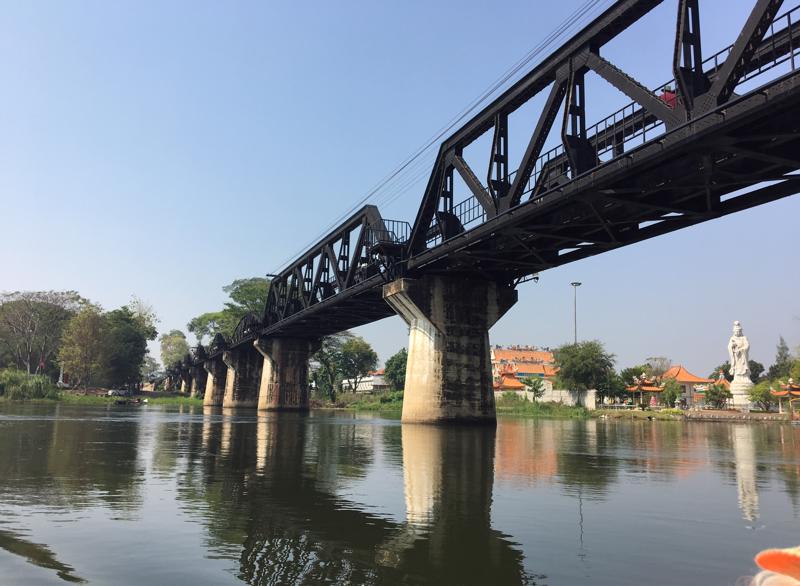
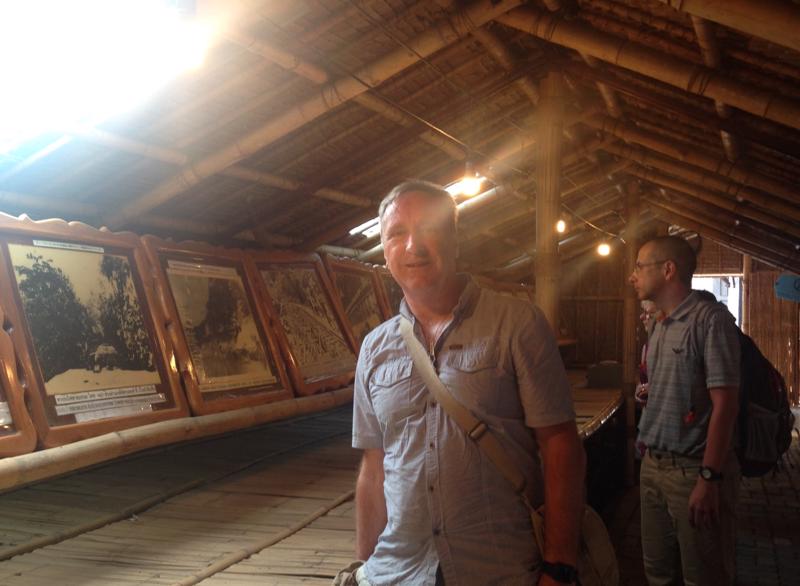
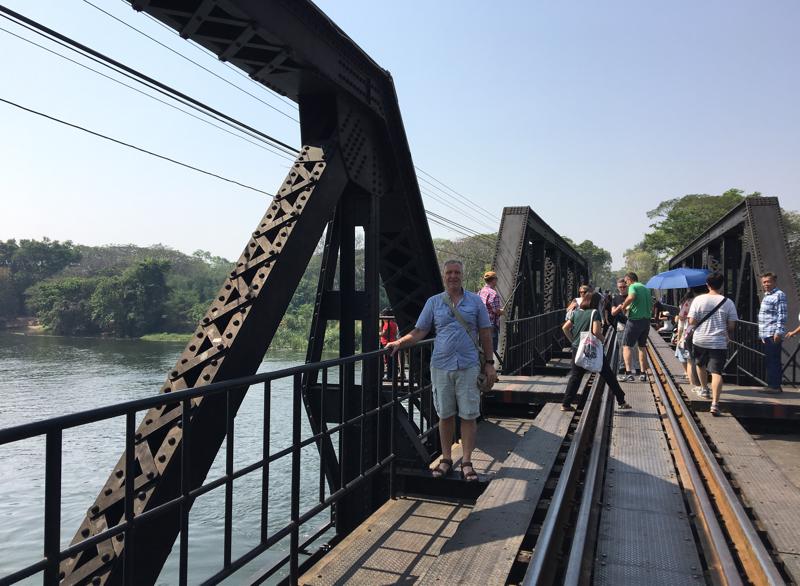
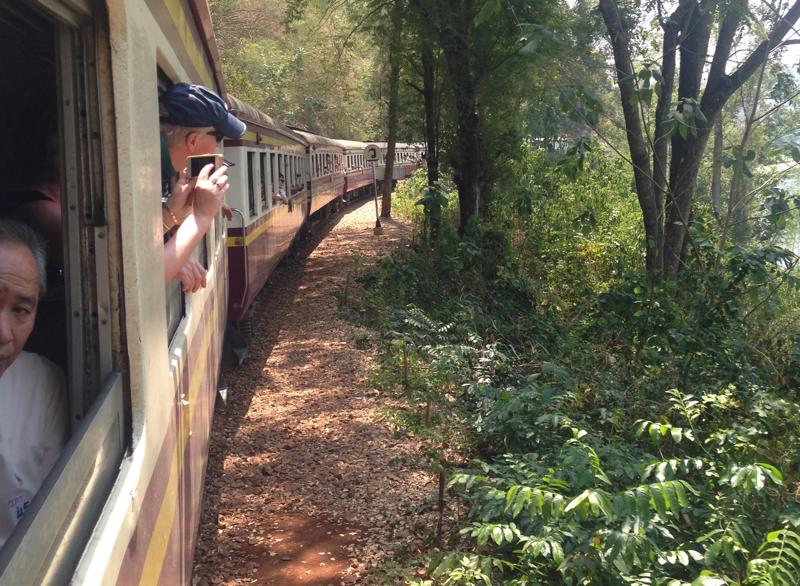
prison camps, followed by a boat ride up the Kwai to the surviving bridge. There we got to walk across the bridge before getting on the train for a 1 hour ride to the Wampo Viaduct.
Just sitting on the non air conditioned train was exhausting God knows what it must have been like building the ‘Death Railway’, our generation have been so lucky.
Once we finished our tour of the railway itself we were taken to the war cemetery at Kanchanaburi the main cemetery of three in the region for victims of the Death Railway’. Again these only deal with the allied solders and none of the 100,000 Asian ‘helpers’ who were conscripted by the Japanese and never returned.
Twelve hours later emotionally drained we returned to our comfy hotels counting our blessings for not being born into those times. There but by the grace of God…
Wednesday our last day in Bangkok saw us stumble upon the ‘Love
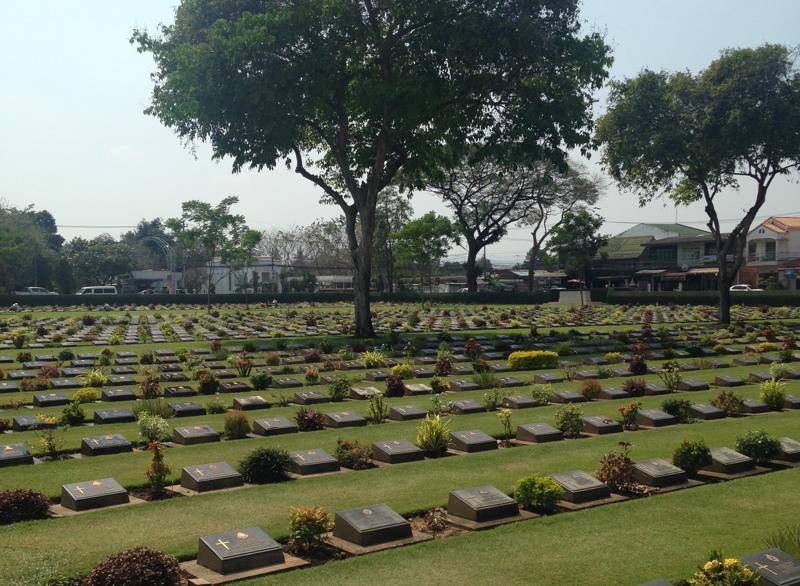
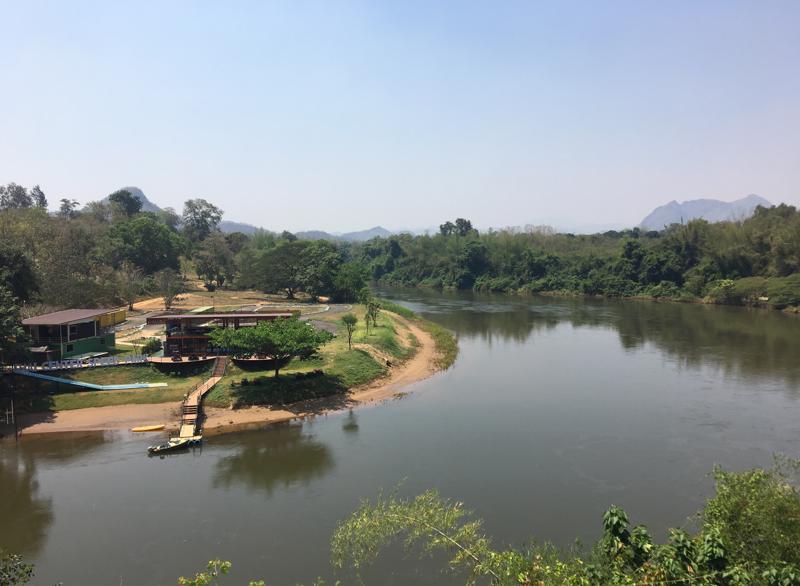
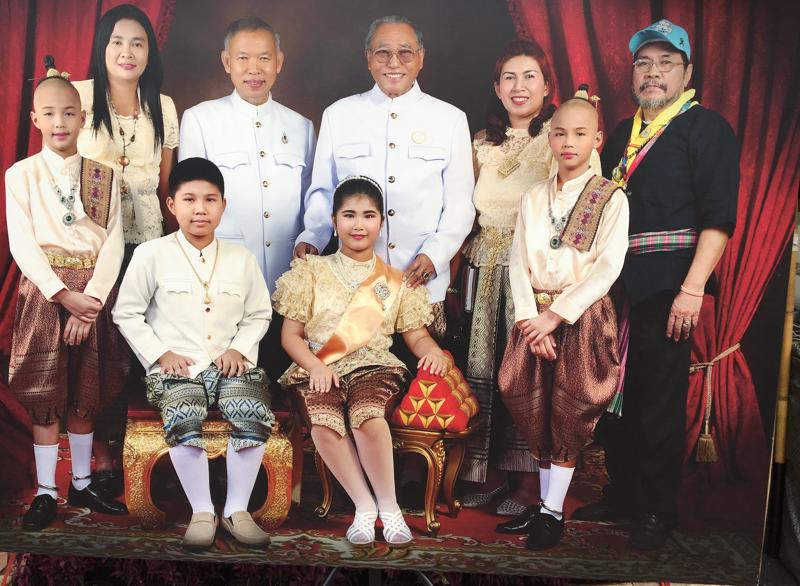
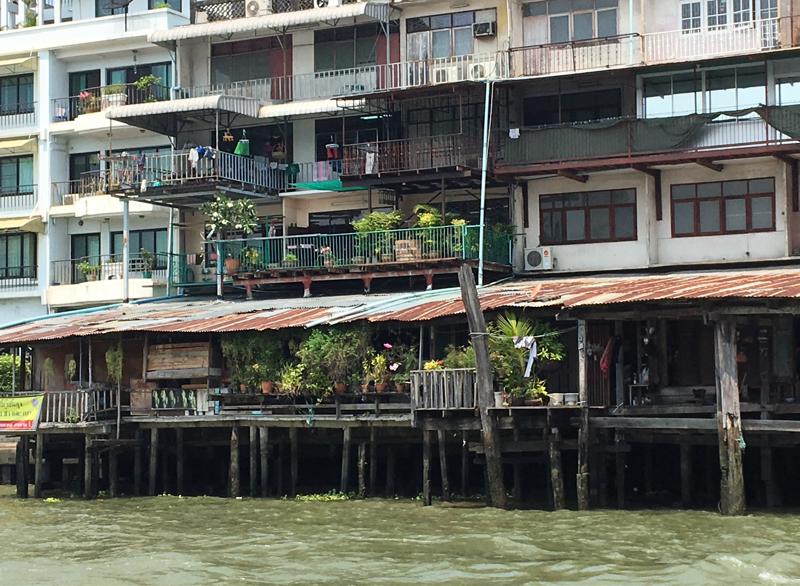
and Warmth at winter’s end’ festival at the king’s Palace. As usual we were just bumbling about when we found a closed road curious as we are we entered to see what was going on. Soon Police accosted us, but all went well they seemed to laugh a lot and escorted us towards the palace. When we got there everyone was Thai and all dressed up like a garden party. We were put in long trousers and following security checks ushered into the palace gardens. There we spent a scorching 2 hours wondering around the palace gardens, which were beautiful, looking at hundreds of Thais’ all of whom were dressed in traditional clothing. Ironically poorly dressed as we were they were as keen at having their photo taken with us as we were of taking pictures of their magnificent costumes.
A lovely day out from nothing. #Feeling lucky today.
As ever the photos do not do the day / occasion / weather justice. The outfits sparkles in the sunlight all the time but the photos look like a rainy day in Manchester!
Thursday was spent making our way to Baantip Suatong Resort, which involved a taxi ride of 2 hours. Upon arrival we were shown our somewhat dingy room. Putting on our best non British act we actually complained and following a little banter we paid a small
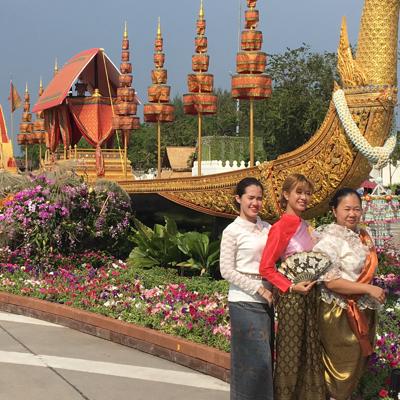
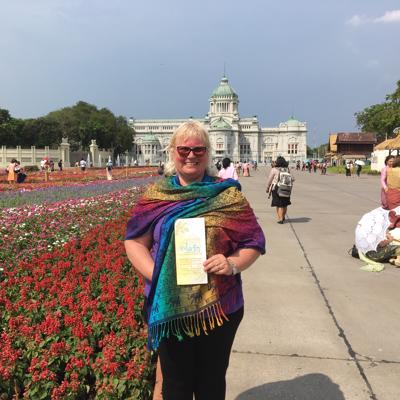
increase and were put in an altogether much better room overlooking the river Mea Kong (not its famous namesake in Vietnam). This was much more native. Only one person on the site spoke any sort of English, all signs were in Thai – the cheek of it! It was just what we wanted, a mostly Thai resort far from the beaten track – in fact far from any track. The nearby shop was described to us as a mini mart. Well that was an understatement, more of a micro mart, a few old packet of crisps and dusty coke bottles, cheap plastic chairs outside with the local motorcycle taxi drivers sitting on them swigging bottles of Leo a cheap local beer. Nonetheless it was fantastic. On Friday we met an American Kerry and her husband Jeff who were settled in this area and were happy to speak to English speakers so caught up on all the local points of interest, Jeff then took us for a drive around to see the local Wat concealed within tree roots, we then went off in search of the monitor lizard population. After a lot of driving around
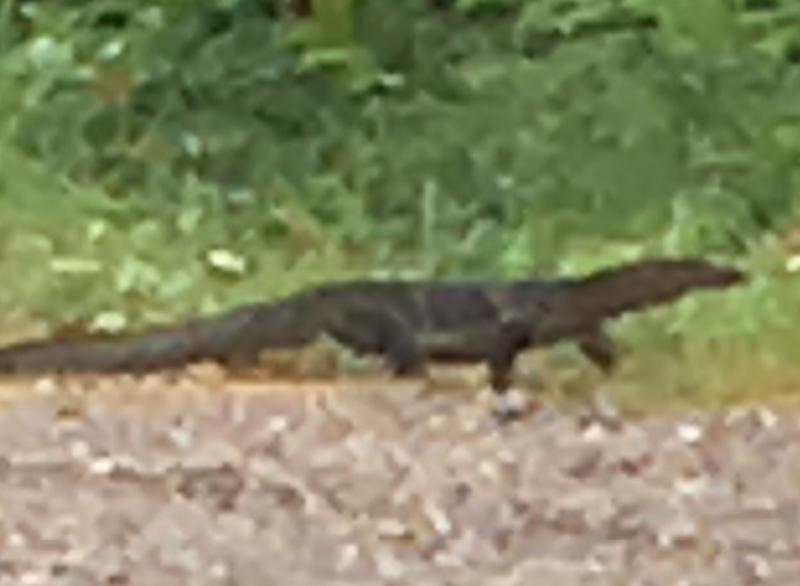
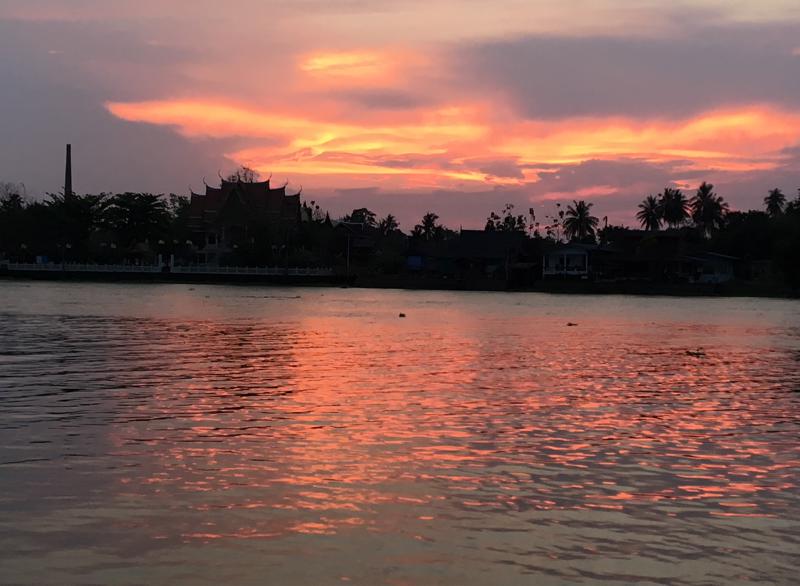
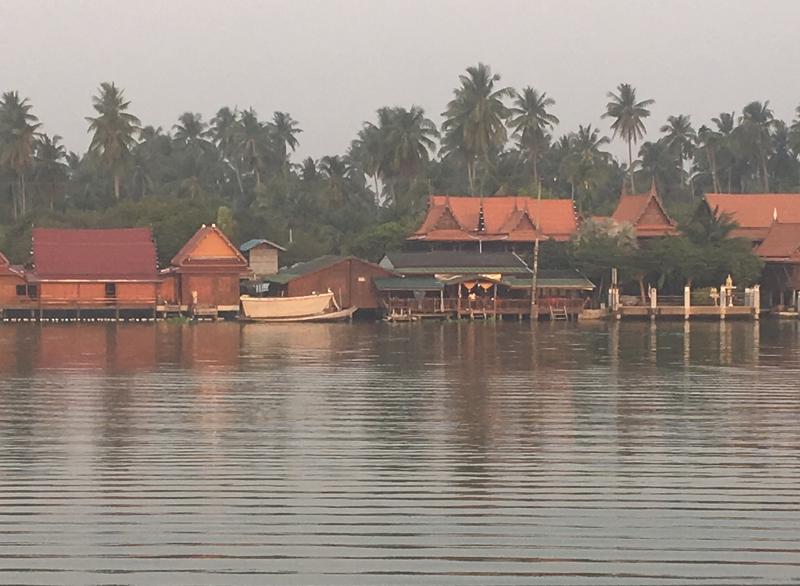

on our first rainy day since we arrived, we found a monitor, it was around 1.25m long, but being a bit swifter than me the only photo I have makes it look like a gecko. The restaurant food here is splendid as is the view of the river from the restaurant.
We have now made our first travel buddies. There is Henk and Alesia from Holland and also Geoff and Kerry from England and USA respectively. Henk and Alesia were on a 6 week holiday and we are hoping to meet up with them again in Hua His later next week, Kerry and Geoff live at the Baan Tap resort and were a constant source of information assistance and entertainment throughout out stay.
Saturday saw us out to see therein market which was spectacular - still photos do not do it justice but a full size train runs right through the middle of the market, brilliant to see. After a late lunch we then set off on a boat trip to the Anphawa floating market and following that onto the 'firefly' area where the boat driver takes you to see areas full of fireflies no pictures of these as they look hopeless on film but look great when you are there. On this trip our chartered longboat managed to break down. this meant that we had to do a boat to boat transfer in the middle of the river. Poor Wendy was nervous but to her tremendous credit she managed to scramble from one of these rickety canoes powered by Izuzu diesel engines, into another, any thoughts of her slipping between the two boats banished to all our relief.
Back on dry land Henk, Alesia Wendy and me all settled down for a stiff drink - or two.
Sunday and we were up with the larks 05:30 with the Buddhist Monks arriving for their collection of food to the thunderous sound of drums! Could soon get fed up of that. Packed and off to the railway station thanks to geoff, at Rachaburi here we brought tickets for a 120Km ride to Hua His for 24 Baht each less than a pound for both of us. So as Sunday the end of the third week comes around we have just arrived at Hua Hin, already looking forward to our next week.
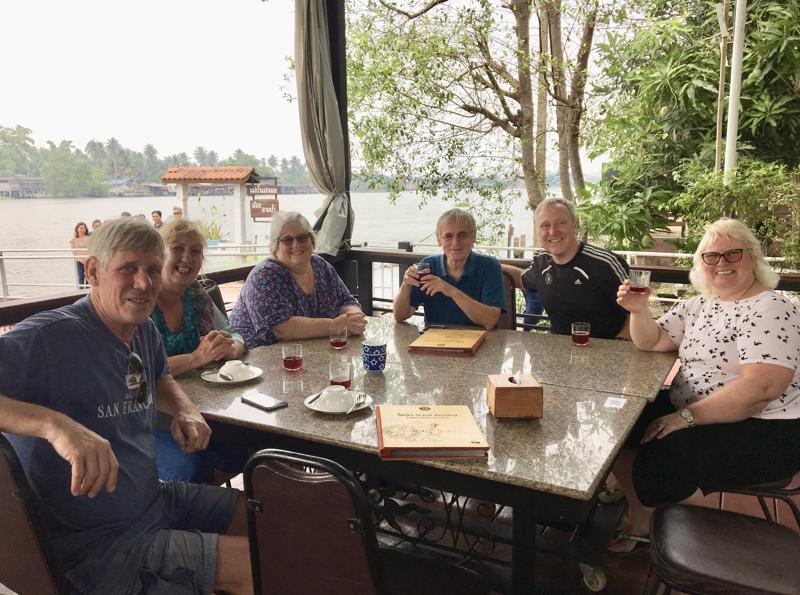
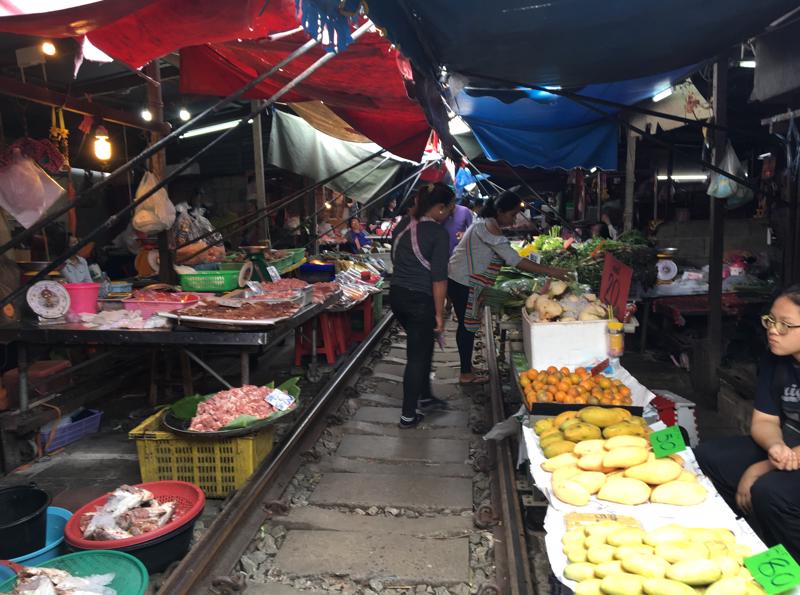
1.
Chapter one
2.
Week Two Hong Kong and Bangkok
3.
Chapter Three
4.
Chapter four
5.
Chapter Five
6.
Weeks Six and Seven
7.
Weeks Eight, Nine and Ten
8.
Week 11 (I think)
9.
Week Twelve
10.
Week Thirteen
11.
Weeks Fourteen and Fifteen
12.
Weeks Sixteen to Twenty Three
13.
Week Twenty-Four
14.
Weeks Twenty Five to Thirty One
15.
Week Thirty Two
16.
Week Thirty Three / Four
17.
Week Thirty Five
18.
Week Thirty Seven to Week Forty
19.
Week Forty One
20.
Week Forty Two
21.
Week forty three to forty five
22.
Week 46 Goodbye Gold Coast Hello Bangkok
23.
Weeks 47 to 51
24.
Week 52
Share your travel adventures like this!
Create your own travel blog in one step
Share with friends and family to follow your journey
Easy set up, no technical knowledge needed and unlimited storage!